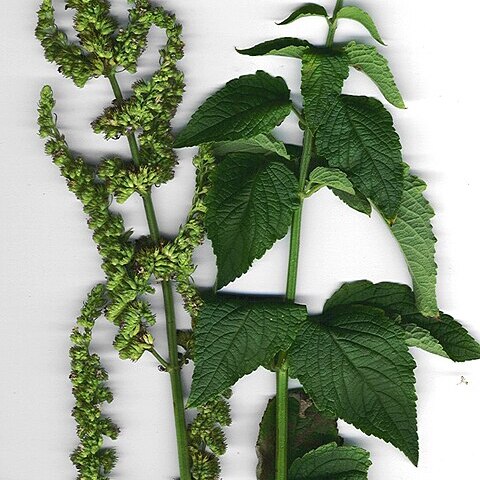Erect, perennial, aromatic herb, often shrubby, 0.5-2.5 m. Stem and branches glabrous or pubescent. Leaves herbaceous, ovate or elliptic, 2-3 by 1-1.5 cm, acute or acuminate, base rounded or truncate, entire; margin elsewhere serrate or more often crenate, glabrous or glabrescent above, sparsely or densely tomentose and glaucous beneath; petiole 0.5-1 cm. Spurious racemes 4—8(—15) cm long, consisting of 10 to many secund cymes, densely congested toward apex, generally forming large, terminal panicles; cymes 6-15-flowered, subcapitate, secund, pectinate, incurved. Bracts crinite and setaceous. Calyx tubular, 2-2.5 mm long, in fruit 3-4 mm, tomentose; teeth subulate, setaceous, slightly longer than the calyx-tube. Corolla violet or pale mauve fading to cream, 3-3.5 mm long. Nutlets small, oblong, 1.5-2 mm long, smooth, black; pericarp slightly swelling when soaked in water.
A herb which keeps growing from year to year. It is 2 m high and stiffly erect. The stems are 4-angled. The leaves occur opposite one another on slender stalks. They have irregular teeth around the edge. The flower is a compound one at the end of the plant. The fruit is composed of 4 nutlets each about 1 mm long. They are smooth and black.
A dense, much-branched inflorescence of very small flowers
Corolla pale yellowish-green with mauve marks on the lip.
A tall, erect, aromatic, woody herb

